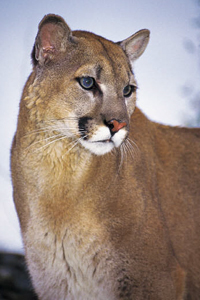
Mountain lions rarely attack people; they mostly observe from a distance.
NPS
Mountain lions often drag their prey more than 1,000 feet from the kill site before enjoying their meal. They then hide the carcass with branches and leaves and will return to feed several times.
When in Lion Country
Mountain lion sightings are rare and there are few attacks on people. Most of these attacks have been by young lions that have been forced to hunt on their own and are not yet living in established areas. They will key in on easy prey such as pets and small children.
Be sure to travel in groups when in lion country. Keep children next to you. If you see a lion, stop and do not run. Maintain eye contact and do all you can to appear larger. Speak calmly to the lion in a firm, calm voice. If attacked, fight back. Lions have been known to be driven away by prey that fights back.
Souce: National Park Service / NPS